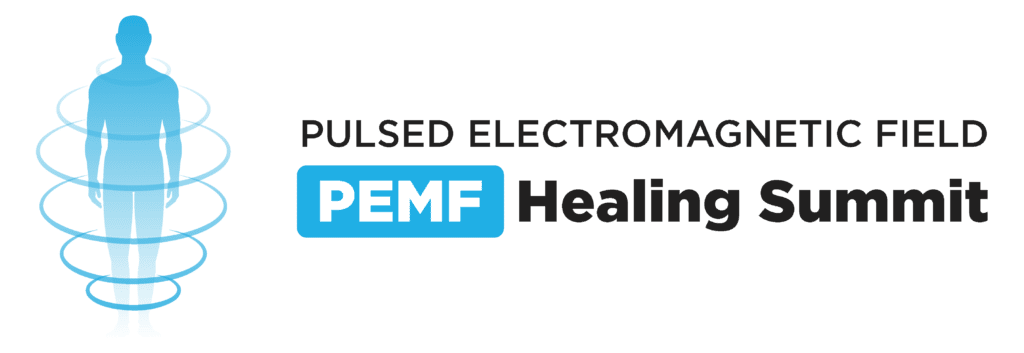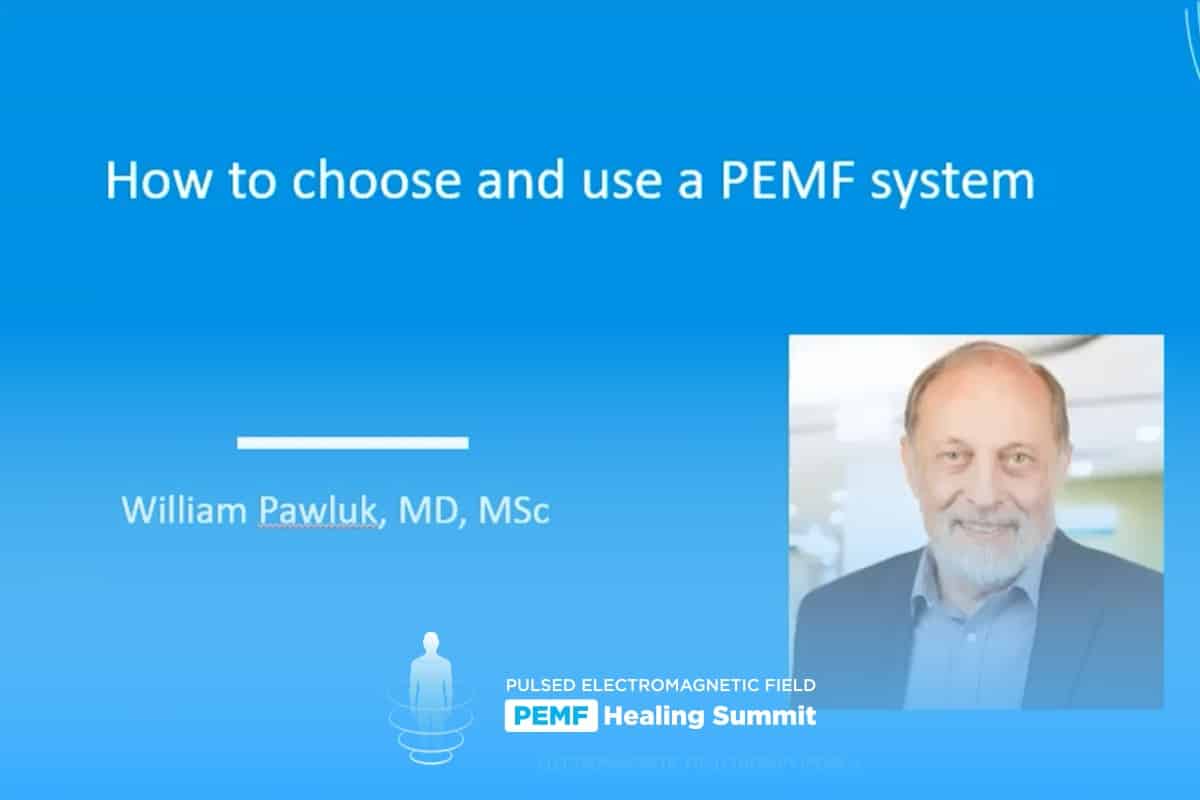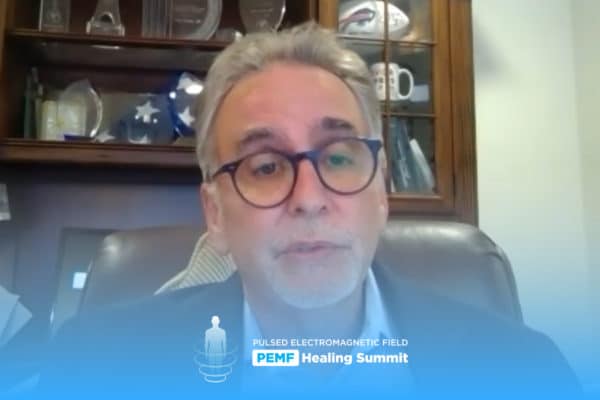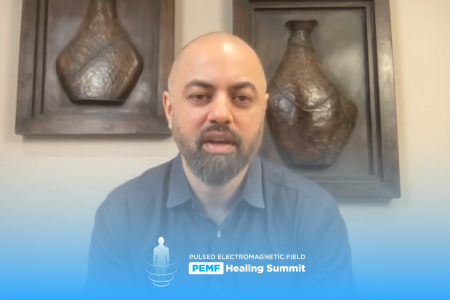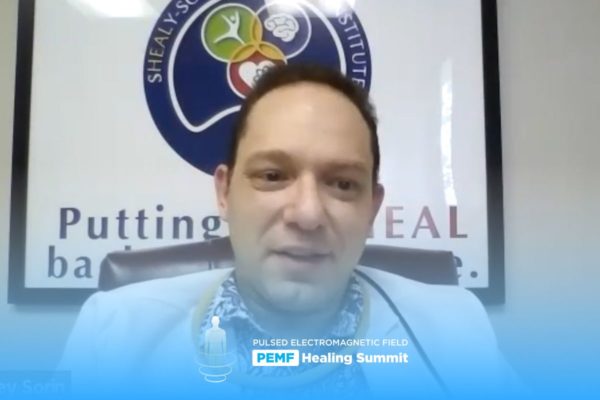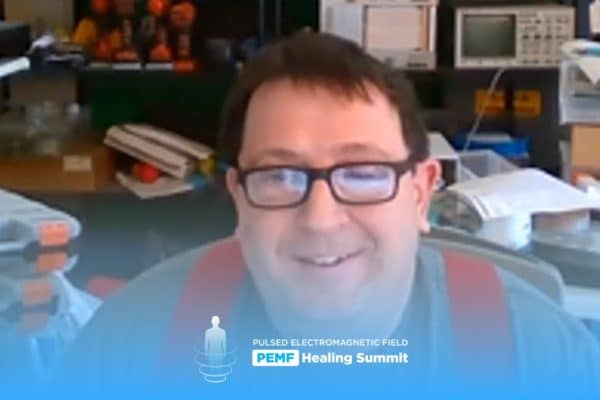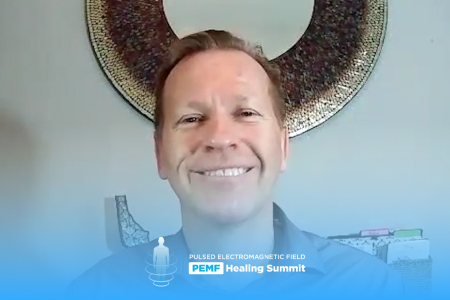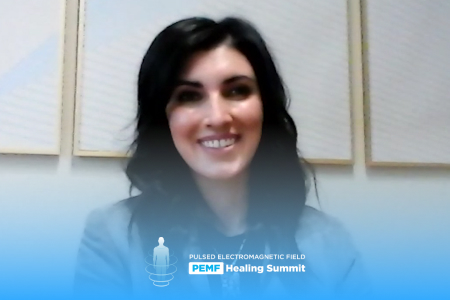Join the discussion below

William Pawluk, MD, MSc, author of “Supercharge Your Health with PEMF therapy”, was recently a holistic doctor near Baltimore, MD. Previous academic positions at Johns Hopkins and University of Maryland. Training: acupuncture, homeopathy, hypnosis, energy medicine, nutrition and bodywork. Considered the foremost authority on the practical use of Pulsed Electromagnetic... Read More
- Choosing an appropriate PEMF system for health and healing can be complicated and daunting. This presentation deals with the many practical parameters involved in selecting the right system for one’s needs and budget. Once the right system is selected it’s important to know how to get the most value from it.
William Pawluk, M.D., MSc
This is Dr. Pawluk. This video is how to choose and use a PEMF system. There’s a lot of confusion about which PEMF systems should be used and how to use them. So we want to provide you with some instructional information on how to get the best value out of your system and how to use it. So how do you choose it and how do you use it? Here’s what we’ll cover. The crucial Faraday’s Law and the Inverse Square Law, these are important aspects of how magnetic field therapy should be looked at and how you will evaluate how well it’s gonna work for you. How PEMFs work. PEMFs, inflammation, and the adenosine receptor. PEMF systems by size and intensity. The conditions PEMFs have been shown to manage. How to choose a device. Devices I recommend. And I’ll give you an example of a specific condition, so you can see how you think through the process of using it. And then how to match the condition or treatment goals with system parameters, the available systems and proper application. And then of course, some resources. Most magnetic field actions in the body work through the induction of charge in the tissues by the magnetic field as it passes through the body. That is, it’s a result of something called Faraday’s Law, critical to the development and use of PEMF systems. So what is Faraday’s Law? Faraday’s Law basically states that time varying, in other words, magnetic fields that are in motion, which is what you get with PEMFs, induce an electric field whose magnitude is proportional to its rate of change. So in other words, the magnetic fields induce electrical fields in the body, and the extent to which they induce the magnetic field or the electrical field in the body is proportional to the change in the intensity of the magnetic field over time. So this is a description.
This is the way it looks on paper basically in a symbolic form. So the magnetic field is being, the signal of the magnetic field takes time to evolve. So it goes from zero to the peak and that’s called the change, dB, change, d stands for delta or change, and B is the intensity of the magnetic field. So the change in the magnetic field from zero to the peak takes time. And that time is the change in time d, delta, time. So the dB divided by the dT gives you the amount of charge that’s likely to be produced in the body. So a very low dB, for example, only reaching maybe five gauss is gonna give you a very low dB/dT or skew rate as other people call it. Now, a very high intensity magnetic field, like say 5,000 gauss, delivered over a very, very short period of time, it’s gonna give you a very, very high dB/dT. So the dB/dT then becomes really critical to determining how well that magnetic field is going to work in your body. Now, another law that we are working with with magnetic field therapy, and that we need to understand really well, is Newton’s Inverse Square Law. There are other laws that describe the loss of the magnetic field over distance, but one of those laws that are used in medicine to calculate the dose of a radiation field for somebody getting radiation therapy is Newton’s Inverse Square Law. So it’s well-known in medicine. Now, magnetic fields, like other forms of radiant energy, in other words, energy that radiates away from a source, drop off and in strength, drop off in strength or intensity as they move away from their source. Very, very important. That’s basically the Inverse Square Law and one application of the loss of intensity of magnetic fields is the Inverse Square Law.
Now, this law applies to all forms of radiant energy, magnets, magnetic fields included, light, sound, vibration, cold, heat, ionizing radiation, as I mentioned, and so on. So anyway, all of these, basically as they drop away from the source, that happens according to the Inverse Square Law. The Inverse Square Law in terms of a magnetic field, this is a sample of measurements of magnetic fields. Magnetic fields range from 1,000 millitesla or 100 millitesla which is 1,000 gauss down to one millitesla which is 10 gauss. So 1,000 gauss magnetic field, one centimeter into the body, 1,000 gauss magnetic field, one centimeter into the body has already lost about 75% of its intensity in one centimeter. So if the magnetic fields are even lower, that same loss of intensity based on that Inverse Square Law will drop off extremely rapidly. And you get very little magnetic field as you get like five centimeters into the body or eight centimeters into the body, so a very large loss of magnetic field intensity, and that becomes important relative to Faraday’s Law. So if you’re trying to deliver a certain amount of energy into the body and you have to account for the distance that that magnetic field is gonna go into the body, so in other words, if you’re gonna be treating deep into a belly or into a liver or a lung, you have to account for the distance. And if you want a specific magnetic field dose at that distance, then you have to calculate the right dose. So because of that, intensity matters. Now, PEMF actions on neutrophils. So one of the ways we look at PEMF therapy in the body again is how is this going to reduce inflammation? That’s a key element of magnetic field effects or benefits is the reduction of inflammation in the body. And magnetic fields tend to do that through neutrophils or white blood cells.
And they do that through adenosine receptors, which are in the membranes of the white blood cells. And PEMFs hugely increase the binding of adenosine to the adenosine receptor. So adenosine is increased, adenosine in the body is increased by PEMFs. And that adenosine then has to bind to the receptors in the tissues, particularly in our case, what we’re looking at is white blood cells. Results after magnetic field stimulation of the adenosine binding to the adenosine receptor is seen after 30 minutes of PEMF exposure. It gradually increases up to a point of 30 minutes. The adenosine receptors are saturated with a 1.5 millitesla or 15 gauss magnetic field. So once the magnetic field reaches 15 gauss at that receptor site, then it’s considered saturated. And because adenosine receptors are throughout the whole body, particularly again because white blood cells circulate through the whole body, there’s a widespread cellular response throughout the body. Now, thinking about that, again, that you need 1.5 millitesla, so over time, the magnetic field increases the binding of the adenosine receptors, and you get some binding at less than one millitesla or 10 gauss, but minimal, but it increases very rapidly until it reaches a plateau, basically a peak at about 1.5 millitesla, which is about 15 gauss. So that’s the binding of the adenosine receptor. So the optimal magnetic field intensity basically for the adenosine receptor is around 15 gauss. It can still go up a little bit higher in time, but again, essentially it plateaus.
Unfortunately, whatever you’re doing that’s beyond 15 gauss at the adenosine receptor is largely wasted. It’s not doing anything. It’s not doing harm, but it’s also not providing any benefit. So given the Inverse Square Law and given the goal of intensity at the adenosine receptor 15 gauss, then you have to calculate the dose. So if what you want to do is deliver say 140 gauss in the body, that 140 gauss will deliver 15 gauss at 0.8 inches. If your goal is to deliver 15 gauss let’s say at three inches into the body, you’re gonna need between 960 and 1,200 gauss. So you have to calculate that. So if you’re reaching deeper into the body, then you’re going to have to have that higher intensity. For example, if you’re gonna treat deep into a hip, you have to figure that it’s going to be probably about three inches deep at least. And then you’re gonna need about 1,200 gauss to deliver that 15 gauss to decrease inflammation at that spot at that point. Now, if you wanted to go higher, say for example, you’re treating across a brain, if the target depth across a brain is going to be across the head, is it going to be about six inches? Let’s say on average. You wanna treat all the way across a brain, six inches across, the applicator’s on one side of the brain, and then the goal is the other side of the brain. Then you need about 4,000 gauss to deliver 15 gauss six inches away. If you’re treating across a chest, so a chest from front to back, and you’re treating through the lungs, then you’re going to need even higher intensities.
Let’s say you need to go eight inches into the body, then you’re gonna need 6,000 or 6,600 gauss magnetic field to deliver that 15 gauss deeper into the body. So calculating that is very important for you to be able to get the benefits that you’re looking for for the problems that you’re trying to manage. So treatment time also matters. So it’s not just intensity and it’s not just the Inverse Square Law, but also how much treatment are you doing? So targeting the treatment to your goal area is important, but whether you do enough treatment time is really critical as well. And a lot of people sort of ignore the treatment time and wanna do the minimum time that they can to deal with the health issues they have. Unfortunately, the reality, the physics of it is that you need to do the time that you need to do. This is a slide of a sample of people who are treating non-union fractures. So non-union fractures treated with an 18 gauss magnetic field are recommended to do about nine hours of treatment a day, nine hours of treatment a day. So they did a study on people who had non-union fractures and they looked at how often they treated and how long it took them, or how many hours a day they treated and how long it took them to get to adequate healing to heal their fractures. So those who treated over nine hours a day healed their fractures in 112 days on average, which was 76 days earlier than people who only did, who did less than three hours a day.
So the people who did less than three hours a day where they’re supposed to do 10 hours a day or nine hours a day, they healed in 188 days, in other words, in six months. So you could heal it in about three months if you’re doing nine hours a day, but it could take you up to six months if you’re only doing three hours a day. So that certainly becomes a personal choice, but again, you’re gonna heal a lot faster if you have the right magnetic field intensity for the right period of time. Now, what do PEMFs do in the body? That’s really important because if you understand what they do in the body, then you understand all the different ways that they can be helpful for different kinds of health conditions. So what do magnetic fields do in the body? That’s really important because it’s not just the diagnosis or the disease or the condition. It’s what they actually do. So they stimulate the acupuncture points and meridians. They have antifungal/antibacterial actions. They have blood thinning effects. They reduce swelling and edema. They reduce inflammation, as we mentioned. They increase ATP. They help cells to recycle themselves properly. They help to manage the circadian rhythms of the body. They definitely increase circulation. They help to repair skin and other tissues through increasing collagen and hyaluronic acid. Because they open up cell membranes, they have detox capability. They stimulate growth factors for repair purposes and that’s what accelerates the healing is the stimulation of growth factors. And they help the immune system, help nerves in the body, increase nitric oxide, which helps to dilate blood vessels and has other immune actions, increases the oxygenation of the tissues of the body by increasing oxygen recovery from the lungs. Absolutely help with pain, so not only do they help with pain by healing, but they also help pain just on its own. Just a natural pain killing effect.
They stimulate red cells, stimulate stem cells, again for stimulating repair and regeneration. Help the body to deal with stress, the response of the tissues and their nervous system to stress. And they affect the water content of the body. The water you take in, if you’re treating the water you’re taking in, but also they affect the water within the body. Now, I’m not gonna go over all of these, and these are in the book, but basically what kinds of evidence is there to support the treatment of various diseases considering the mechanisms of action of PEMFs? There are over 80 different conditions. Actually, there are more. If we consider the basic actions, there are many more. But in the “Power Tools For Health” book, we provide evidence over about 50 different health conditions. So there’s scientific evidence that they help those individual conditions. And the intensity of the magnetic field is all over the place in terms of these studies. And they don’t always study the optimal magnetic field intensity for a given problem or condition. But at the very least, we know that there’s scientific evidence to support the use across a whole host of different conditions. Here’s another slide again showing all the different conditions that PEMFs actually treat and manage. And you may wanna pause this slide and go back to this slide if you wanna read through the different conditions that PEMFs could help. So the newest book that I’ve written called “Supercharge Your Health with PEMF Therapy” actually doesn’t have as much of the science in it, but it has a lot more guidelines in terms of how to use the PEMFs and how to choose them, so “Supercharge Health with PEMF Therapy.” And in that book, we have a list of different machines and pieces of equipment that I have used and recommend to people on a regular basis.
And there is a table in there that gives you the price, the intensity, the kinds of applicators that are available, whether it has programs or not, the kind of waveform or the waveform. Again, it doesn’t matter so much. But all of that’s in that table if you’re interested. I know only have part of the table in this slide. Now, also on drpawluk.com on the homepage, go to the homepage, on the right side, you’ll see Product Comparison. You can click on that and it’ll open up a document, which you can download as an ebook. So there’s the link for that again for the Product Comparison. Many people find that very useful, so it’s almost like the table that’s in the Supercharge Your Health book. So if you don’t have the Supercharge Your Health book, you can then go to this link or this page on drpawluk.com. Now, in the book, one of the most important things about the Supercharge Your Health book is what I do is I dissect the different types of systems they are, the different kinds of magnetic systems. And I grade them based on whether they’re local or whole body or both, and whether they’re low intensity, medium intensity, high intensity, or very high intensity, and the same thing goes for whole body, low, medium, high, and very high. And so you can see the intensities. So if you want to pick a system based on the problems in the tables in the book about the problems you have and the best magnetic therapy devices for that problem, then you can go back to this book table and figure out which devices are most likely to be helpful for you. Now in the book, I also go over the size of the effect.
Remember I mentioned magnetic fields have these different actions like acupuncture stimulation, like anti-infection, anticoagulant, so all these different actions of PEMFs. And then I basically have tried to get a representation, an estimation essentially of what the size of the effect is on that particular physical action by the different types of magnetic fields, whether it’s local or creating a larger area like a whole liver or a whole lung or a whole belly or whole body. And there are whole body low intensity systems and there are whole body high intensity systems. So if you happen to own a whole body low intensity system, then you might be able to see through this table the kinds of effects it’s gonna have on those specific physiologic actions. So again, reasonably helpful guidelines for that. Again, the same thing going through all the different conditions. So for the heart, for example, local intensity is gonna have the biggest physiologic effect. A whole body low intensity system is gonna have minimal effect on the heart. It’ll have some, but minimal. Whole body high intensity will have a strong effect on the heart, as it does on the vascular system. So the immune system, a local effect is not gonna affect, a local device is not going to affect the immune system that much except for locally. So it’s gonna have some effect, but mostly locally. The same thing with regional, it’s gonna affect the bigger area of the body to help the immune responses in that area. But the biggest effects are gonna happen with whole body, whether low intensity and also high intensity. So low intensity is still gonna help the immune system because it’s treating the whole body. So if it has a small effect locally, it’s gonna have a small effect throughout the body for the immune system.
It’ll give you some guidelines for how it could affect those different actions. There are other tables in the Supercharge Your Health book as well where I go into the different conditions. So like addiction, addiction is more of a problem with local application, particularly to the brain. And you’re more likely to have a stronger response with a medium intensity magnetic field or a high intensity magnetic field, and same thing with a whole body system because most whole body systems have smaller applicators. So if you treat the brain with a high intensity system, then again, you’re gonna get a benefit for addiction. Same thing with Alzheimer’s disease, which is a central nervous system, it’s a brain problem. For arthritis, low intensity magnetic fields are not gonna do a whole lot for you locally. So generally speaking, you’re gonna wanna have a medium or high local system for a local arthritis problem, but you’re gonna get better actions basically with medium or high to arthritis. So you’re gonna get a stronger action locally with a high intensity field. Athletic performance needs higher intensity magnetic fields generally to treat the different affected areas of the body. Autoimmune, again, all of these systems will have autoimmune benefits. The bigger benefits will happen with the bigger systems. All right, so bruising, you need basically a medium to a high intensity local treatment.
Bruising is mostly local, so you just treat the bruised areas. So it’s gonna have that benefit locally as well. Cancer is in many ways all over the place. You could treat locally to some extent, likes say for example with breast cancer, but you also need to be treating the whole body for that condition as well. Again, breast cancer, so I go through different cancers. And now the tables, the full tables are in the book and that’s where you should go for further, more detailed guidance. Now, all of that’s okay and you’re gonna kinda have to put together your own sort of ideas on how to treat yourself. Fortunately, in the book, I also then go into the different conditions by telling you or advising you on what the intensity of the magnetic fields should be, the kinds of applicators that you would typically be using, the treatment time you should think about using, and then I also provide some guidance on supplements. I always say that you can’t build a house without bricks and mortar. You can’t help cells to heal themselves if they’re depleted in nutrition or supplements. So I do make recommendations for supplements just to help your magnetic field therapy work even better. So let’s go into this in a bit more detail. So for gallbladder problems, the intensity of the magnetic field is local, the treatment is local. It is sufficiently high intensity magnetic field, minimum of 100 gauss up to 4,000.
The higher the dose, the better the penetration will be and the faster the action will be. So low intensity magnetic fields are expected to help the early stages and reduce symptoms. However, it’ll be most helpful for reducing inflammation and improving gallbladder muscle function, so you don’t get gallbladder spasm. Higher intensities are likely necessary. And a low and slow approach is recommended because you don’t know how inflamed the gallbladder is and how it will react, so going low and slow is important. Then the applicators, you could use local applicators or regional applicators. Local is sufficient up into the right upper quadrant area, but sometimes gallbladders are not always in a very specific spot. So regional can be helpful to basically treating the right upper quadrant of the abdomen. Small portable battery-operated applicators can be placed over the surface of the right upper abdomen, at the right ribcage edge just before it slants to the side of the chest. Either two applicators can be used one above the other in the same area or two small applicators can be stacked. A pad applicator may be used as well covering the whole right upper quadrant area. With the high intensity system, use a local applicator, so either a butterfly coil, paddle, or loop.
If there’s involvement of the pancreas or liver, which often happens with gallbladder disease, then you need a regional applicator as well to treat this bigger area. That would include the pancreas and the liver. Then in terms of treatment time, the treatment has to be basically individualized. Smaller applicator or lower intensity applicators may be needed for longer periods of time. And so smaller portable applicators could be done for several hours at a time until symptoms settle down for a given episode of pain. 30 to 60 minutes two to three times a day at the beginning of starting treatment with PEMFs for the gallbladder until the symptoms have improved. And then you can back off the treatment time for maintenance. Now, gallbladder problems tend to be long term as well. So just because the pain is better doesn’t mean you’ve cured the gallbladder. Maintenance treatments may be needed to continue, need to be continued for one to two months. The only way to know that there is no inflammation in a gallbladder other than symptoms is to do a gallbladder ultrasound or a CT scan of the abdomen to see if the gallbladder wall has thickening or the gallbladder wall has shrunk, or if there is a sludge that the sludge is now gone. So once gallbladder disease is diagnosed, the condition will be chronic unless removed surgically, unless the gallbladder’s removed surgically. Then in other words, it’s gonna be a chronic condition. And PEMFs can manage it. But if it’s just sludge, you can manage it easily. If it’s stones, that’s much more difficult and you may not be able to impact the stones completely or permanently, certainly could help with symptoms, but it doesn’t get rid of everything.
So PEMF therapy are not likely to help the stones except to reduce the pain from spasms of the gallbladder. So in the book, I go through each of the conditions mentioned with some of that kind of discussion about what the impact of PMEFs can be on that condition. And then again, as I mentioned, I do present or provide you with supplement recommendations. And most of these supplement recommendations come from nutritional medicine. Sometimes I provide dosing. Dosing is always a challenge and is difficult. So I think for supplement recommendations, it’s best to consult with a nutritionist who is skilled and provide you with that information. Now for the gallbladder, let’s go over what you would do to treat the gallbladder. So here’s the gallbladder area in the upper right quadrant. There’s the gallbladder. Sometimes it sits just below the edge of the gallbladder, of the liver rather. And so what you’re doing then is you’re treating this area, so you can treat it with a whole body system. You can do a loop coil right over that upper abdomen. That’ll help that gallbladder too. You can do a seven inch pad, in this case from the Parmeds Premium Flash or the Parmeds MultiFlash would be similar. So you can use the pad applicator to put the loop coil across the belly, so getting part of it to hit over the gallbladder area, or you could take that loop coil and fold it into a figure-of-eight and apply that figure-of-eight right over the gallbladder area. A high intensity system like this is probably gonna provide benefits better, faster typically than a low intensity system.
So the two low intensity systems that I would recommend would be a FlexPulse or a MicroPulse. So the FlexPulse has 10 programs in it. MicroPulse has nine programs. I’m sorry, one program. It has two phases to it, but one program. And they’re both about the same intensity. So this is the placement of the rings from the MicroPulse across a knee. You can do one MicroPulse applicator on one side of the gallbladder, one on the other side, or you can stack them one on top of the other, and you can do the same thing with these two applicators. Now, the FlexPulse and the MicroPulse have different configurations of the coils. Inside the MicroPulse coil, you have almost like a stove top, electric stove top element. So it’s wound flat into that applicator. So each applicator is the same and there are two separate applicators in two separate ports. If you only use one coil, all the energy in the machine is driven to that one coil, which gives you about 200 gauss. If you’re using them separately in different areas over the upper abdomen or different areas of the body, then each coil separately is 100 gauss approximately. Now you can stack these two coils as well and that’ll give you about 240 gauss. Now, the reason this can give you 240, they add to each other because each one is getting 100 gauss separately. Now the MicroPulse has a different coil configuration. It’s more of a circular coil as you can see within that coil.
And that means there’s a gap in the center. So the magnetic field intensity is not as high in the center as it is on the edges. Both of the applicators are plugged into a stereo, plugged into the machine, into the A9, and that stereo plug is delivering 200 gauss and that’s divided equally into each applicator, each coil. So 100 gauss for each coil, so two coils separated is 100 gauss each. Two coils stacked is about 200 gauss because all of that power is driven from that one location. All right, so these can be stacked or used separately over the upper abdomen. Now, just to give you some concepts of this and why I mentioned that a coil at the edges is where the magnetic field is the strongest. So you can see as the magnetic fields move farther and farther away, the pulse moves farther and farther away from the center from the source, the magnetic field gets weaker and weaker. As the waves are closer to the electric wire producing the magnetic field, that magnetic field is gonna be the strongest. As you move farther and farther away from that coil, the wire, then the magnetic field gets wider and the current gets weaker and so the magnetic field is weaker. All right, this is another depiction of the same thing, so this is a coil.
The magnetic fields are going around in circles around that coil, according to the right hand rule. And at the coil itself, since there’s many more coil lines or field lines around the coil, it’s gonna be the strongest there. Now, as you move away at the center, the magnetic field lines of the wire, the coil being produced, bounce off the ones from the other side. Okay, so in the center then, the magnetic field is stronger in the center than it would be farther out here because there’s no matching current, matching current and coil coming into the center. So you’re still producing a pretty strong magnetic field in the center, much stronger than the same distance farther away. All right, so treatment in the center locating the coil over the spot of pain in the center may still produce benefits, but the biggest benefit’s gonna come from having the edge of that coil sitting over the spot that you’re trying to treat. All right, and then the same thing, again, according to the right hand rule, the way that the current flows and the way that the magnetic field flows around the coil called the right hand rule, that determines the magnetic field intensity and the direction of the magnetic field. So if the current’s flowing this way, magnetic fields, according to the right hand rule, are going to the right. Same thing happens when we take that coil and we put it around a shoulder. So on the edges of the coil, say the top of the shoulder, the back of the shoulder, the front here, that’s where the magnetic field is the strongest, but you get a nice, fairly strong magnetic field in the center. And that means that if you cranked up this magnetic field intensity pretty high, you might get some muscle contractions up here.
You’re not gonna get very much in the way of muscle contractions toward the center because the magnetic field drops off so much. However, this is gonna produce a very uniform magnetic field around the whole shoulder just by doing this application. Again, being aware that where it’s touching along the edges, it’s gonna produce the strongest action. All right, so let me go back here. But in terms of the gallbladder, if you were gonna use this applicator for the gallbladder, you’re better off squeezing the sides together. So again, because the field is the strongest at the sides, if you squeeze the sides together so they’re more aligned like at the center here, then you’re gonna get a much stronger magnetic field action right over the gallbladder area. Now, my recommended PEMF devices, generally, obviously there are many other options out in the community and that are available commercially, but my recommended PEMF devices for higher intensity where you can have a variable intensity based on the intensity setting you choose between about 4,000 gauss and 10,000 gauss, this includes the Parmeds MultiFlash, Premium Flash, and UltraFlash. So for the price, these are the greatest value. And then we have the TeslaFit Plus, so the TeslaFit devices, which are the Plus2, the Duo, and the Pro. And these range in intensity from about 4,000 gauss up to around 7,000 or 8,000 gauss. There’s a spark chamber, a device called the PEMF 120 or the Hugo Pro or the Hugo Intense. And they get to be high intensity as well, but they’re called spark chambers, which means that they need maintenance.
These other devices are solid state and they don’t need maintenance. For medium intensity devices for whole body and local, I recommend the Parmeds Super, Ultra 3D. So the Super and Ultra 3D have PC control. That means you can select the frequency, intensity, and time for more consistent and predictable treatments. So they are between 150 and 1,600 gauss. The 1,600 gauss would be more for the local applicator. 150 would be for the whole body. And then either medium intensity local devices with variable intensity would be like the FlexPulse I mentioned or the A9 or the ICES produced by the same company who produces A9, which have about the same 200 gauss intensity for each applicator. For low intensity devices, I recommend the BioBalance. The BioBalance has a magnetic field intensity of 10 gauss to the whole body pad, wherever the coils are in the whole body pad, it’s about 10 gauss, and also for the smaller local applicator. Other community-based PEMF devices that are very low intensity, typically around one gauss, are not gonna do as good a job. They may help make you feel better, but they’re not gonna heal. The low intensity BioBalance is not gonna heal all that well either, but the price of that system for whole body health maintenance primarily, not necessarily to treat a specific problem, but for health maintenance would do a better job.
Now, again, a lot of this information, the best information for the guidelines for use are gonna be in the book “Supercharge Your Health with PEMF Therapy.” And that’s currently available on our website drpawluk.com, or you could get it from Amazon. Now, you will also be able to, if you’re interested and want much more in-depth information, we offer a course on the PEMF training academy called Supercharge Your Health with PEMF Therapy. It’s the Supercharge course. So you can get more in-depth information. There’s more visuals associated with it. And there’s more discussion verbally for those who like to learn by listening to presentations. All right, so some additional thoughts for your guidance for how to use magnetic field therapy and how to think about it for whatever problems you are looking to use it for. Intensity, as I said, does matter. The total treatment time, total amount of time you’re using for treatment matters a lot. I showed you those slides about the non-union fractures. Treatment time does matter. And often the treatment time is more intense when you initiate therapy. Over time, as the tissues begin to heal, then you may be able to cut back the treatment time. And when you cut back the time and the problem recurs, then that means you haven’t healed the problem and you’re going to end up finding out what treatment time you’re gonna need going forward, whether it’s months, years, or longer. Higher intensities are not harmful. It’s quite the opposite. Research shows that high magnetic field intensity is not harmful, including the fact that we treat the brain with magnetic field intensities that are about 6,000 or 8,000 gauss often for an hour at a time.
Higher intensities are not harmful despite the fact that some people who were selling low intensity devices say that they are. Quite the opposite. Now on the other hand, low intensities don’t help a lot of the time. Research has shown that. Low intensities don’t help a lot of the time. In fact, they could actually mask problems by making you feel better generally without actually healing the tissue or the problem. So there’s a risk with low intensities of actually making you feel better, but not taking care of the problem. Now, when people say the rules of treatment are this, you gotta do this much intensity, this treatment time and so on, people are looking for very objective evidence. How long should I treat this problem for? What intensity do I need? When am I gonna get better? So treatment rules are not rules. They’re guidelines. And the reason for that is that every body is unique. Every problem is unique. It’s unique to that body and the body will tell you what it needs. So the rules are just guidelines. You can start with the guidelines, but basically you have to adjust the guidelines as you need to based on what the body’s telling you. What’s happening? Is it getting better fast? Is it getting better slow? Is it getting better at all? Do you relieve symptoms at all? If you don’t feel significant relief, then you have to adjust your protocols, or you may have the wrong piece of equipment, or you have the right piece of equipment and just not using it the right ways.
And again, Supercharge Your Health can give you some guidance on that. Now, how do you tell a problem’s better? Well, it’s better to do objective measurements and the objective measurements are like a blood test or an x-ray or an imaging study or even a physical examination or a range of motion test. All of those can be objective and they can give you more guidance in terms of how much you’re progressing and how much you need to adjust your treatment protocols. So they can be very helpful versus just feeling better. So relying just on the way you’re feeling is not gonna tell you what’s happening in the tissues often well enough. And critical now, one size does not fit all. Every person’s experience and needs are unique. Every person’s experience with their PEMFs and their treatment program, whatever treatments they’re doing, are unique and they will change over time. So you have to adjust your protocols based on that. You have to understand the system. You have to adjust your protocols based on the equipment available and the problems being addressed and how you’re using it. So some people for their problems need only say 1,000 gauss for an hour, maybe once a day, and that may be enough, but there are other people who may need upwards of four or five hours a day to help to heal their problems, such as I mentioned with the fractures, the non-union fractures. Much of these thoughts, if you will, are addressed in the Supercharge Your Health book. So again, what we covered today. We covered the crucial Faraday’s Law and the Inverse Square Law.
Very important in figuring out which magnetic system you need. How PEMFs work, primarily by increasing energy in the tissues. How PEMFs help with inflammation through the adenosine receptor. Understanding PEMF systems by size of the system and the intensity of the applicators, and applicators are different even with a given system. So you can have a whole body system’s gonna be generally weaker than a medium-sized applicator versus a small applicator for the same system. So understanding the size and the intensity of the system and the applicators is very important. The types of PEMFs needed to treat various conditions, we covered those. How to choose a PEMF device out of the different devices that are available, the devices I recommend based on the intensity and whether you’re treating local or whole body. I gave you a gallbladder disease, which is a simple, easier process, a localized process to manage that gives you some sense then of how to treat it, and then how to get information from the Supercharge Your Health book on protocols for different systems or different conditions. Now, again, the key here as part of our discussion is that we have to match the condition or the treatment goals to the system parameters, the magnetic system. And you have to look at what magnet system parameters you need to manage those treatment goals and then what systems are available. So once you have your parameters, then what system do you have to buy or get and use to match the condition in your goals. And then, of course, you have to use it properly. And the last thing is the resources and the resources primarily are, as I mentioned, the drpawluk.com and the book “Supercharge Your Health with PEMF Therapy” and also the “Power Tools For Health” book. So thank you for watching. I hope to work with you soon. I hope you get great results with whatever device you get. And if you need any help, either selecting equipment or advice on how to use equipment, don’t hesitate to email us at [email protected], [email protected]. Thank you. Enjoy the rest of your day.
Downloads
